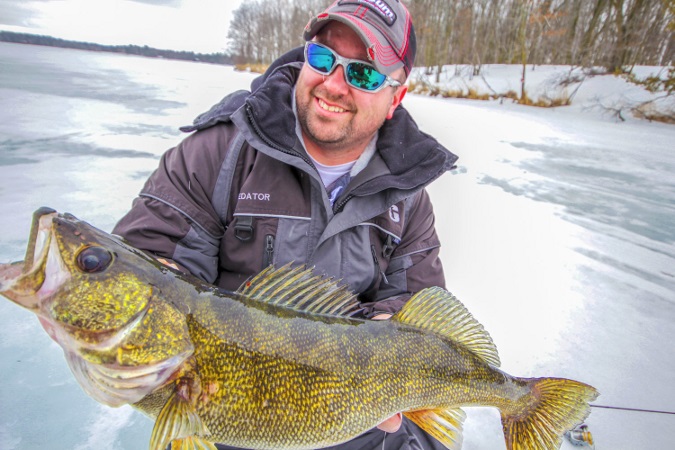My first ice trip to Lake Erie years back was a real eye-opener. As masses of anglers converged on the shoreline west of Sandusky, Ohio, many looked the part of a search and rescue team more than fishermen. Equipped with survival suits, as in the kind you’re used to seeing the Coast Guard wear, these hard-water fanatics looked as if they were very prepared to go in the drink. As they deployed in the morning hours on top of ATVs, snowmobiles, and surprisingly air-boats, you could tell that for a good number of them, there was a clear concern and plan for thin ice and the safety precautions that go with it.

Fast forward to today, where a pair of brown work bibs have given way to specific ice apparel designed with anglers in mind. Pockets are ergonomically located, big enough to hold small tackle-boxes, and vented to drain water in the event of a plunge through. Knees and rear-end are padded with neoprene to allow anglers who kneel on the ice even more comfort. Fabric is reflective so you may be seen on a dark night, and is ultra-durable for years and years of use. Not to mention, several of today’s suits like Striker Ice Brands, have a flotation layer built-in.
Thinking back to first ice forays, probably one of the most dangerous situations I’ve been in was Duluth Harbor on Lake Superior. Ice cutters roll through to keep the harbor open for shipping, which results in a continual ebb and flow of ice-chunks, open water, and ultimately safe-ice that is broken and refrozen on a daily basis. The scariest of propositions is “trap-door” ice, which is a large chunk that floats off the ice sheet, then wanders back and partially locks up. Step on the end of one, and you drop below the waterline, as the other end of the chunk rotates back over the top of you, quite literally sealing your fate.
While heading out on the harbor in the pre-dawn darkness, an unseasonable rain left the ice jet-black, and wet, thus hiding any treacherous ice spots. Everything looked the same. Even with headlamps and ice chisels, one of our companions pushed ahead and literally walked right into open water; a six-foot gap where ice sheets had separated. Grant was fortunate enough to kick a few times and pull himself up on the far sheet, only to have to jump back into the water to get back on the side we were on. As he pushed off the far ice sheet with his heels, Grant dove forward, plunging the picks we threw him deep into the ice on our side of the crack. Our day was done, as too much had already been risked, though with some flotation, I would’ve been much less concerned for our friend.
From experience I can tell you that manufacturer claims stand up to actual lake and pool testing by many individuals, large and small. Thankfully, I’ve not been one of them, though I’ve worn suits from at least three of the floating suit companies on the market. The best part? I didn’t know that what I was wearing had flotation. The suit wore exactly as any ice-designed bibs and jacket I’ve worn before, all for about the same price as other suits in their class.
Another benefit that’s often overlooked is during mid-winter, when ice conditions are usually at their most-safe. The flotation that’s used in my Striker Predator suit is exceptionally wind-proof, waterproof, and warm. This is most readily apparent when temps and wind-chill are at their worst, or when riding to and from your destination on a snowmobile or ATV. With all of the choices presented for today’s ice angler, and the improvements, comfort, and function built-in, there’s no good reason to not look at getting one which also floats if aiming to purchase new.
One thing to be clear on however, is that floating suits are not provided for the idea of pushing the boundaries of safe ice. Rest assured, if a break-through occurs you’re covered, but these suits are for peace of mind, not careless or reckless abandonment of reason when it comes to staying on top of hard-water. No ice is ever fully safe, and while the suit may float you, it can’t ensure you won’t hit your head or cut yourself on an auger blade going down. These are real concerns that should still cause you to bear caution as the first line of defense against unsafe ice. The hidden floating layer is simply in the background to bail you out should the unthinkable happen.

